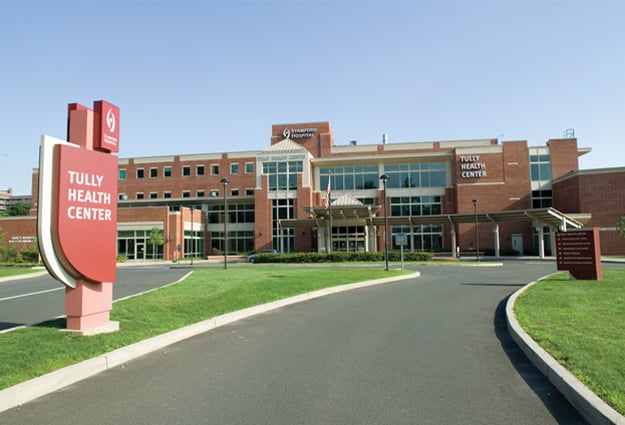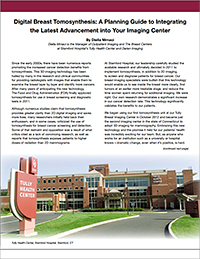
Editor's Note: This is the first installment of a five-part series adapted from the author's paper "Digital Breast Tomosynthesis: A Planning Guide to Implementing the Latest Advancement into Your Imaging Center." A link to the full paper, can be found at the bottom of this post.
We began using digital breast tomosynthesis in October 2012 - just the the second imaging center at the time to adopt 3D imaging for mammography in the entire state of Connecticut.
Embracing this new technology and the promise it held for our patients' health was incredibly exciting for our team. But, as anyone who works for an institution like a university or hospital knows - dramatic change, even when it's positive, is hard.
Adopting any new technology requires a learning curve. The introduction of digital breast tomosynthesis presented an abrupt change in how radiologists interpreted breast cancer screening images throughout their careers. In fact, introducing digital breast tomosynthesis into our facility resulted in a massive cultural change for all of us - the radiologists, the imaging technologists,and our office staff. It was a whole new world.
At Stamford we faced a variety of of challenges integrating this technology into our facility and our workflow. Throughout our journey into 3D mammography we learned many lessons which we feel can benefit others as they consider implementing digital breast tomosynthesis into their hospital or practice.
The journey begins and then falters
The first step of our journey was the installation of the tomosynthesis unit at our Tully Breast Imaging Center- our outpatient facility with the highest volume of breast cancer screenings. To become certified to use this new technology, our radiologists and physicists had to take 8 hours of mandatory training and our technologists had 3 days of intensive applications training. Hologic, our equipment vendor, installed the unit and software over the course of a weekend- beginning Friday night right after the the last patient screening. Everything was ready for use when we opened Monday morning.
Of course we were excited to begin using the tomosynthesis unit right away, but unfortunately, the transition was not like flipping a switch. In fact it took almost 3 months before we could say operations were running smoothly. It was an exciting time, but those 3 months are ones none of us will ever forget.
The unit collects more dust than images
After training,only half of our radiologists were fully on board with the 3D technology. It didn't help that many inside and outside of our industry questioned the efficacy of tomosynthesis in detecting more breast cancers than 2D digital mammography.
Another concern was the 3D aspect itself. The 3D images display as layers, and at first glance are not as sharp or defined as the images taken in 2D. As in CT-Scan, the radiologist has to view the 3D image slice by slice. It takes quite a while for both the radiologist and the technologist to adjust to viewing mammographic images this way. It was especially challenging in the beginning to detect motion when viewing images this way; and when found, required taking another image of the patients breast.
Exposing the patient to additional, potentially dangerous, radiation was also a big concern for some of our radiologists at the time. This concern stemmed from the fact that 3D tomosynthesis is used in conjunction with 2D imaging, resulting in a few additional seconds under radiation than conventional digital mammography.
So at first, the tomosynthesis unit kind of sat alone in its room, underutilized.
Next Installment: A Champion (and Dramatic Workflow Changes) Emerge
Click on the thumbnail below to read the full paper:

Diella Mrnaci

